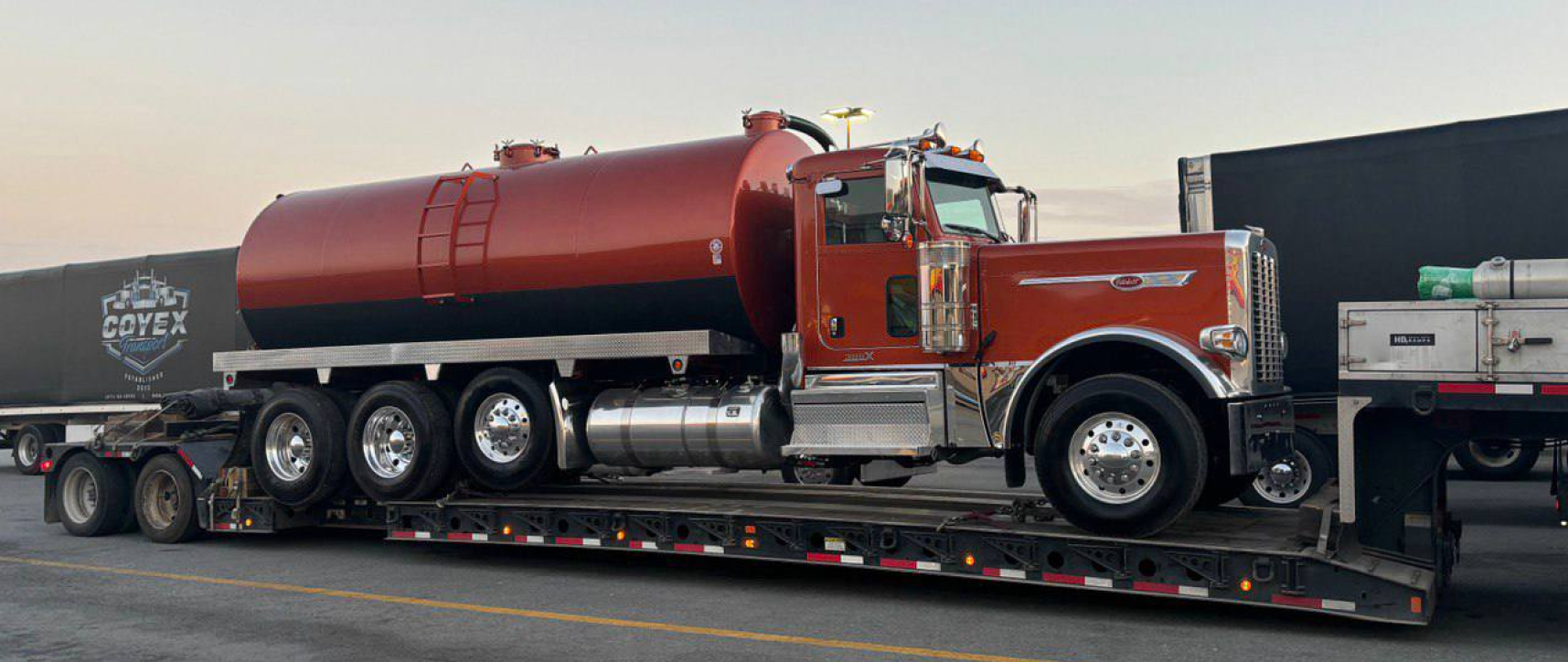
Weighing long or multi-axle (over 8 axles) combinations for oversize and overweight loads is critical to comply with DOT regulations and avoid fines. Incorrect weight or distribution can lead to delays, penalties up to $10,000+, or road damage. This guide helps you weigh vehicles accurately, apply the Federal Bridge Formula, and secure permits. Read on, follow the steps, and haul safely!
Long combinations (>75 feet) or vehicles with over 8 axles require special attention, as their weight and distribution impact bridges and roads. The Federal Bridge Formula (W = 500 × [(L × N) / (N - 1) + 12N + 36]) sets allowable weight for axle groups to protect infrastructure.
Standard limits include:
20,000 pounds per single axle
34,000 pounds per tandem
42,000–42,500 pounds per tridem
80,000 pounds gross vehicle weight (GVW) on interstates
For >8 axles, the formula allows >80,000 pounds if axle spacing (L) is sufficient—e.g., 68,000 pounds for 9 axles at L=51 feet. Inaccurate data risks permit denials or fines. Use certified CAT scales for precise, legally defensible measurements.
Tip. Save scale tickets in your ELD for quick DOT inspection access.
Follow a clear procedure for accuracy:
Locate certified scales (CAT scales or state weigh stations).
Weigh the entire vehicle (gross weight), each axle, and axle groups (tandem, tridem).
Measure outer bridge (first to last axle) and inner bridges (intermediate 2+ axle groups) in feet.
Record axle spacing (L) precisely, as it’s critical for the bridge formula.
Compare weights to formula calculations—if exceeded, an overweight permit is needed.
Ensure steer axle weight is ≤12,000 pounds (13,000 with reinforced tires), tandem ≤34,000, and tridem ≤42,500.
Tip. Use a laser distance meter for accurate axle spacing measurements.
For combinations >75 feet or with >8 axles, precision is key. Measure all axle spacings (L) to the inch, as small errors skew bridge formula results. For example, 9 axles at L=51 feet allow ~68,000 pounds, but states like Pennsylvania impose stricter limits, while California may allow more for specific setups.
Check outer bridge (full span) and all inner bridges to ensure no group exceeds limits. If GVW >80,000 pounds or axles exceed thresholds, secure an OS/OW permit via omnipermits.com (processing: 15 min–24+ hr). Use extendable flatbed trailers to increase L and boost allowable weight.
Tip. For complex setups, consult omnipermits.com for permit and weight calculations.
Long or multi-axle loads often need route surveys and pilot cars, especially if >120 feet long or >14 feet wide. Route deviations are prohibited except at rest stops or scales. States like Illinois or Michigan require extra checks for >8 axles.
Permits may include conditions like daytime-only travel or escorts. Non-compliance risks fines ($100–$10,000+), delays, or permit cancellation. Verify routes via DOT websites or Trucker Path for bridge and restriction data.
Tip. Arrange escorts early via DAT Load Board for >120-foot loads.
Find scales. Use certified CAT scales or state stations.
Weigh vehicle. Get gross weight, individual axle, and group weights (tandem, tridem).
Measure distances. Record L for outer and inner bridges.
Check formula. Calculate W for each axle group and compare with actual weights.
Secure permit. Apply for an overweight permit via omnipermits.com if limits are exceeded.
Save data. Keep scale tickets and measurement photos in the cab for inspectors.
Verify tires. Ensure tire ratings (e.g., load index 144) support axle weights.
Arrange escorts. Book pilots for long loads via DAT Load Board.
Check state rules. Pennsylvania is stricter—verify limits on DOT sites.
Document. Log all data in ELD for inspections.
Use portable axle scales for preliminary checks if CAT scales are distant.
Tip. Photograph load and scale tickets for quick DOT verification.
Overloaded axle: >20,000 pounds on a single axle triggers fines—balance loads.
Incorrect L: Wrong axle spacing skews formula, causing review or denial.
No permit: >80,000 pounds GVW without a permit risks delays.
Ignoring state rules: Frost laws in Michigan limit routes—check DOT.
Missing tickets: No scale documentation complicates inspections.
Calculate the bridge formula using online tools or Omni Permits beforehand.
Tip. Cross-check routes with Hammer or Trucker Path to avoid restricted bridges.
Accurate weighing ensures safety, protects bridges, and prevents fines. Precise weight and axle data speed up permit processing (15 min–24+ hr) and minimize DOT checks. It also reduces tire and vehicle wear, saving costs.
Use certified scales. CAT scales provide legally accurate data.
Measure precisely. Use laser distance meters for large combinations.
Check state rules. California/Pennsylvania vary—verify via DOT.
Book escorts. Hire pilots for >120 feet via Omni Permits or DAT Load Board.
Store tickets. Keep weighing results in ELD or cab.
Plan routes. Avoid restricted bridges using Trucker Path.
Trust pros. Omni Permits assists with permits and calculations.
Verify tires. Ensure ratings match axle weights.
Document. Save load and scale photos for inspections.
Train team. Drivers must know bridge formula and state rules.
Related guides. Review Where to find pilot trucks for oversized cargo in the US.
Calculators. Online bridge formula tools simplify planning.
Permit support. Call Omni Permits for urgent permit processing.
With accurate weighing, your load passes DOT checks smoothly. Measure precisely, secure permits, and haul safely!
The efficiency of your daily broker and ways to check their credibility